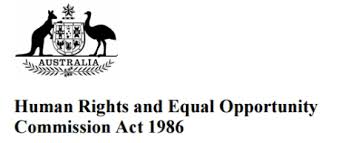Charter of Rights and Freedoms for Canadian Citizens It is supposed to be a discussion question on this article
ChaRTER OF RIGHTS AND FREEDOMS
Charter of Rights and Freedoms, which makes formal distinctions among different kinds of rights: 1) fundamental political freedoms; 2) democratic rights; 3)

mobility rights; 4) legal rights; 5) equality rights, and 6) language rights. Most of these rights were part of Canada’s Constitution before 1982; some can
be found in the BNA Act, 1867; some are considered part of the common law. But by specifically delineating these rights and including them in the
Constitution, an important shift has occurred in the distribution of power in the Canadian constitutional system. Now, Canadian citizens are far more
conscious of their common rights and the ways in which they can defend them. This has given rise to an increase in individual citizens becoming more
" judicially conscious"-i.e., more willing to use the courts to defend their rights. It has also meant that interest groups have become more aware
of this avenue of challenging governmental power. Court challenges to established authority have been on the rise, as Canadians got used to employing this
new tool in the constitutional arsenal. Indeed, the Court Challenges Program of Canada is an innovative national non-profit organization that was set up in
1994 to provide financial assistance for important court cases that advance language and equality rights guaranteed under Canada’s Constitution. Thus, even
the disadvantaged could take advantage of the Charter to press their views if they felt discriminated against. But the program was canceled in September
2006 by the government of Prime Minister Stephen Harper as a cost-saving measure.
The Charter also means that the judges and the judicial branch of government play an enhanced role in the Canadian political system and that old notions of
parliamentary supremacy have had to be reassessed in light of a more activist judiciary. Finally, it has meant that public servants have had to be more
conscious in both the formulation of policy and the implementation of programs to ensure citizen’s Charter rights are not abridged or violated.
CHARTER CHAFES COPS: POLICE COME OUT LOSERS AFTER CHALLENGING RIGHTS
By James Turner, Winnipeg Sun
First posted: Wednesday, January 02, 2013 03:44 PM CST | Updated: Wednesday, January 02, 2013 04:17 PM CST
It’s highly unlikely Manitoba cops were dancing in the streets celebrating the 30th anniversary of Canada’s Charter of Rights and Freedoms.
In a number of court cases large and small, police came out the losers after their actions — and not those of the accused — were put under the microscope by
judges. In many of them, suspects walked free from the charges they faced.
News of the decisions often sparked major public outcry decrying the courts as out of touch with public condemnation of crime and how the Charter appears to handcuff cops making efforts to clean up their communities.
But a top city defense lawyer maintains the Charter is vital to hold the justice system’s various actors to account and ensure police and prosecutors don’t
run roughshod over the rights of suspects.
“The power of the state is pretty awesome,” said Josh Weinstein, referring to the vast crime-fighting resources the government brings to the table through
the police and the Crown.
“The Charter is there to level the playing field — it’s a shield, not a sword.”
Weinstein understands the Charter and the rights it affords is oft-maligned by the public looking in at the system from the outside but said it’s necessary
to have tools to defend against “real, grossly negligent conduct” by the state.
It’s often only when people are accused of crimes and are put into the “giant machine” of the justice system that their eyes open to what they’re up against, he said.
Unlawful police searches and seizures and other Charter breaches aren’t trifling matters, Weinstein said.
“These aren’t small things,” he said. “A violation of someone’s right to counsel isn’t a small thing.”
Here are a few 2012 cases where the courts found serious Charter breaches as a result of police conduct:
TRESPASSING POLICE
Alejandro Chung, the owner of the La Moda head shop on Portage Avenue, made headlines in May after he walked free on drug-trafficking charges.
A judge ruled two city cops seriously trampled Chung’s rights after they burst into his business without a warrant and began searching him on Oct 27, 2009.
Cocaine and weed were seized during the raid.
Justice Doug Abra slammed the “overzealous, high-handed and unjustified” actions of police and threw out the drug evidence. Without it, the Crown had no
case.
CRACK BUST ILLEGAL
Jonathan Dohello and Russel Sobrevinas, suspected of peddling crack out of a vehicle in April 2008, were illegally arrested by police after a traffic stop,
Justice Diana Cameron ruled in June.
Sobrevinas turned off without signaling and police said an unknown “white object” was tossed from Dohello’s side of the car.
Neither officer made an effort to find out what the object actually was, the court found.
Cops noted the two men were acting nervously after they pulled their vehicle over, and one noticed a juice bottle in the car — a drink that could allow a
dealer to swallow drugs and avoid detection, the court heard.
Cameron threw out any drug evidence after ruling police had no legal grounds to arrest the two men.
SMALL WIN FOR SEX PREDATOR
Court of Queen’s Bench Justice Perry Schulman ruled in August that city police twice violated sex-predator Peter Laporte’s fundamental Charter rights by
swabbing his penis against his will and without a warrant to obtain biological samples after his arrest on Nov. 23, 2008. Laporte had engaged on hours-
long sex spree in which he raped a young boy and a mentally-ill woman.
While Schulman’s ruling to toss the penile swab evidence had no ultimate effect on the outcome of Laporte’s case, it fired a warning shot to police who
maintained they didn’t feel warrants was necessary for such scenarios — that the swab was legal as “incident to arrest.”
IT’S THE LAW
Terry Mark Law saw his impaired driving-related conviction tossed out on appeal on Nov. 29 after Justice John Menzies ruled two RCMP officers illegally searched his home following a May 28, 2011 encounter.
Law was stopped under the Highway Traffic Act just outside his home. When he went inside to retrieve his license, the cops followed him in citing officer
safety, despite Law telling them they weren’t invited in.
“I am left with great concerns respecting the attempted use of (the Highway Traffic Act) to justify a warrantless search of a residence,” Menzies said in a written ruling to acquit Law. “There were no legal grounds to conduct the search.”
The Crown is appealing the case, saying the officers had the right to go in the house to protect evidence and ensure officer safety.
PRE-CHARGE DELAY
A man suspected by police of sexually abusing a girl multiple times walked away free in November after a provincial court judge ruled the 18 months it took
police to execute an arrest warrant against him was a delay falling outside the bounds of his rights under the Charter of Rights and Freedoms.
6 BIG CHANGES THE CHARTER OF RIGHTS HAS BROUGHT
By Daniel Schwartz, CBC News
Posted: Apr 17, 2012 4:41 PM ET
Last Updated: Apr 17, 2012 7:56 PM ET
The 30th anniversary of the Canadian Charter of Rights and Freedoms provides an opportunity to look back and identify some of the big social changes that
have flowed from this document.
Here we look at six big changes the charter has brought about — to police powers, women’s and reproductive rights, recognition for gay and lesbian
relationships, linguistic and aboriginal rights, and to what is sometimes called judicial activism. They are not ranked in any particular order.
Over the past 30 years, particularly since the Charter’s equality rights section came into force, the courts have overturned many laws that they felt went
against the charter. But it is also the case that governments have won more often than they have lost on charter challenges before the Supreme Court.
In addition to consulting published material and video and audio for this story, CBC News interviewed:
• Nathalie Des Rosiers, general counsel for Canadian Civil Liberties Association and a law professor at the University of Ottawa, previously a dean and
former president of the Law Commission of Canada.
• Marilou McPhedran, principal of the University of Winnipeg Global College, and former chief commissioner of the Saskatchewan Human Rights Commission and founder of the Women’s Legal Education and Action Fund (LEAF).
• Rainer Knopff, a political science professor at the University of Calgary and author or co-author of three books on the charter, including, in 2008, The
Court and the Charter: Leading Cases.
1) Limiting police powers
One of the more significant changes over the past 30 years has been court-enforced legal safeguards and accountability for policing, Des Rosiers observes.
There were a number of charter cases that codified these changes, including the Oakes case in 1986 in which the Supreme Court overturned a law that had
required the accused to disprove a presumption of guilt, in this case for possession of narcotics for the purpose of trafficking. The defendant testified
that he was holding the drugs for his own use, to manage pain from a workplace accident.
On the charter’s 25th anniversary, leading charter experts voted the Oakes case as the case that has had "the greatest impact on the charter’s
interpretation and evolution" because it’s a symbol of the charter’s goal of maintaining balance between legislatures and courts and " between the
rights of individuals and the demands of democratic society."
They also found that Oakes was the most cited charter decision.
In its latest decision, on April 13, the Supreme Court struck down a law that allows police to tap telephones without a warrant in what police call an
emergency, citing the charter and asked Parliament to rewrite its wiretap legislation to provide for suitable accountability.
Because of the charter there is more protection for privacy and more disclosure obligations between the Crown and the defense, As well, says Des Rosiers,
" good policing practices have now moved from being good to mandatory to have."
Roy McMurtry, Ontario’s attorney general from 1975 to 1985, and later the province’s chief justice, said the charter " has done a lot to strengthen the
individual rights of the accused."
McMurtry, who helped draft the Constitution during the patriation battles of 1981-82, was speaking on CBC Radio’s The Current.
2) Women’s reproductive rights
The key decision in this instance was the 1988 Morgentaler case, in which the Supreme Court ruled that the Criminal Code sections on abortion were
unconstitutional.
By the time of that ruling, there was only one woman on the Supreme Court — Bertha Wilson, the first woman to be appointed.
Siding with the majority, " she anchors her decision in what prior to this case had been seen as almost exclusively an area of criminal law for the
accused, section 7, liberty," McPhedran points out.
" The right to liberty contained in s. 7 guarantees to every individual a degree of personal autonomy over important decisions intimately affecting their
private lives," Wilson wrote in her decision.
Knopf notes that the Supreme Court " took a stand that is much more modest and moderate than what the Morgentaler decision is portrayed as,
rhetorically."
The court left the door open for Parliament to rewrite the legislation but that has not happened and abortion has effectively been legal in Canada since
1988.
For McPhedran, the Morgentaler decision " really captures the reality of women’s daily lives, and it focuses on the difference between a theory of a
right and living a right."
3) Recognition of the LGBT community
Through a series of decisions, the courts have recognized rights of lesbian, gay, bisexual and transgender Canadians, despite the fact that sexual orientation
is not specifically mentioned in the charter itself.
In the 1998 Vriend decision, the court read sexual orientation into Alberta’s human rights legislation, confirming earlier decisions prohibiting
discrimination on those grounds.
That decision led the Alberta government to the brink of invoking the notwithstanding clause, but in the end, it shied away.
From Vriend, decisions on pensions and the marital rights of same-sex cohabiters, followed by a reference to the Supreme Court on same-sex marriage and the
constitutionality of the Civil Marriage Act extended rights and recognition to the LGBT community.
Des Rosiers said that through its combination of litigation and activism, this was " a community that did it right."
4) Linguistic rights for francophones outside Quebec
Through a series of provincial and Supreme Court decisions, the charter gave francophones outside Quebec access to French schools, school boards, and even hospitals. Canada now has a generation called " section 23 kids" who were educated in these schools, where numbers warranted.
Des Rosiers considers those decisions to have been among the most important to have been given effect by the charter but she also notes that " language
politics in Quebec haven’t changed that much" by comparison. The Quebec government famously employed the Charter’s notwithstanding clause to override a
Supreme Court decision on its main language law, Bill 101, in 1989. Some years later, however, it rewrote its language laws to comply with the top court’s
ruling.
Also, an amendment (section 16.1) to the charter, one of just two, specifically about New Brunswick, helped give " a certain sense of affirmation about
the Acadian community," Des Rosier’s notes.
5) Strengthened aboriginal rights
The charter’s recognition of Aboriginal Peoples " sent a very important message," Renée Dupuis, the former chief commissioner of the Indian Specific
Claims Commission, told CBC News last year.
The other amendment to the Charter, to section 25, was on aboriginal land claims.
The charter has imposed on governments a duty to consult aboriginal peoples when resource development and other government changes affect them unduly. It does not give native groups an absolute veto on these changes but it does ensure they will be able to participate in the process.
In the 1990 Sparrow decision, the Supreme Court affirmed that certain historic aboriginal rights, such as fishing, require protection by federal and, in some
cases, provincial governments as part of an ongoing fiduciary obligation towards native peoples.
In Des Rosiers’ view, the charter " has created a change in the negotiating power of the aboriginal community."
6) Judicial activism
For Rainer Knopff, the biggest change, institutionally, is that the charter " amounts to a significant transfer of policy making to the courts,"
especially in an area that could be described as " morality issues."
" The charter has meant that the courts have a major influence on those things in a way they wouldn’t have previously," he says.
McPhedran also said that the charter has had a big impact on judicial activism, although she noted that the practice is not new.
There was the U.S. Supreme Court’s overturning of parts of the New Deal in the 1930s and in Canada there was Roncarelli v. Duplessis in 1959.
In that famous case, the Supreme Court ruled that no public official is above the law, specifically the premier of Quebec at the time, Maurice Duplessis, who had revoked Frank Roncarelli’s liquor license because he was financially helping his fellow Jehovah’s Witnesses who had been arrested for handing out religious literature.
Des Rosiers argues that Canadian legislatures do not have less power than before the charter, that they continue to exercise wide-ranging authority and can
always use the notwithstanding clause (which has to be renewed every five years after it is employed) to circumvent most court decisions.
What has changed, Des Rosiers said, is that the charter forces governments to justify all legislation in light of human rights.
While noting that before the charter there was the concern on both the left and the right about judicial activism, McPhedran observed, " the so-called
‘anti-judicial activism forces’ in this country, many of whom are now senior advisors to our federal government, have been brilliantly successful in
redefining what it means to be a so-called judicial activist." She argues that they have had "a real impact on the way in which judges write and
the extent to which they will reach."





